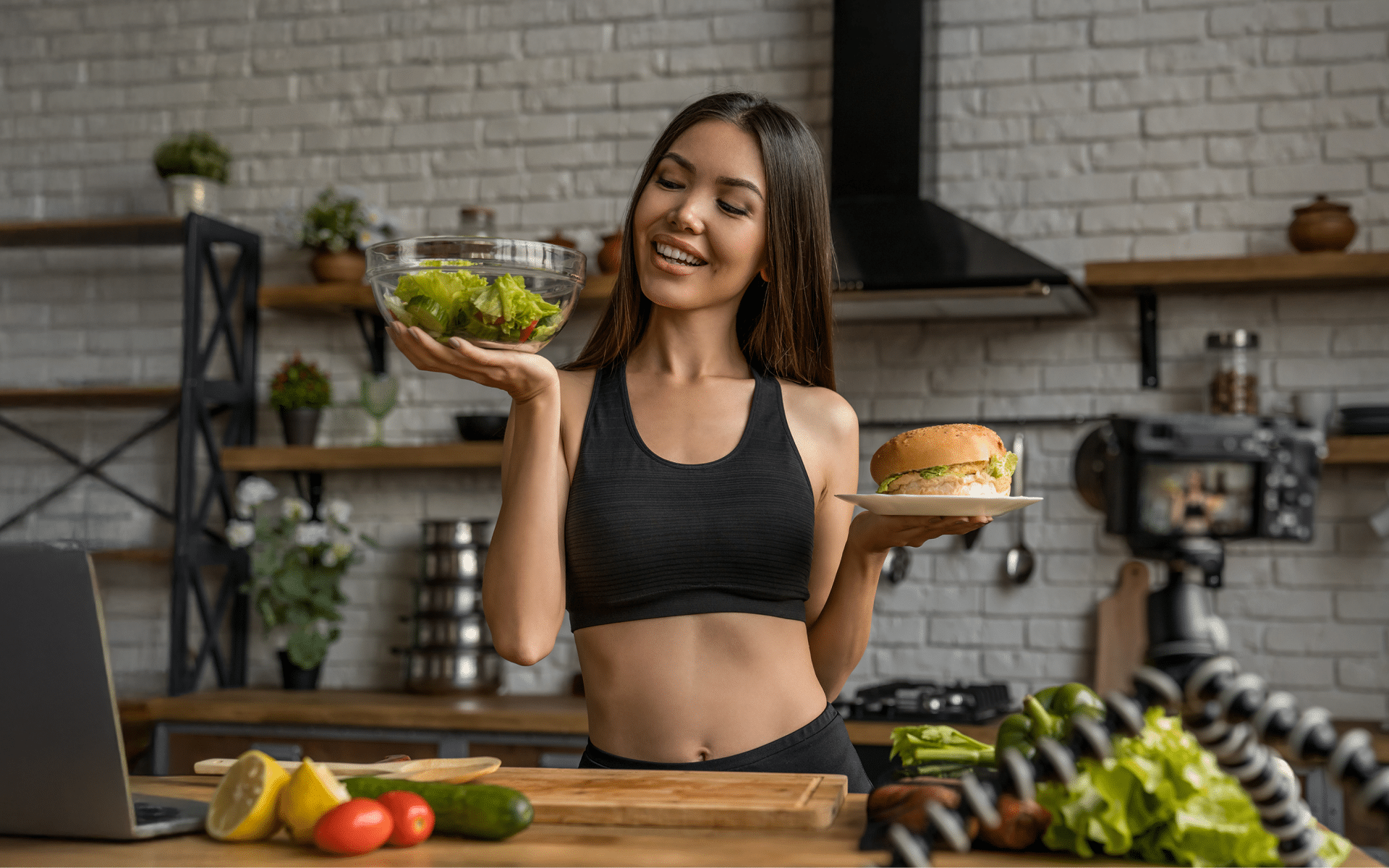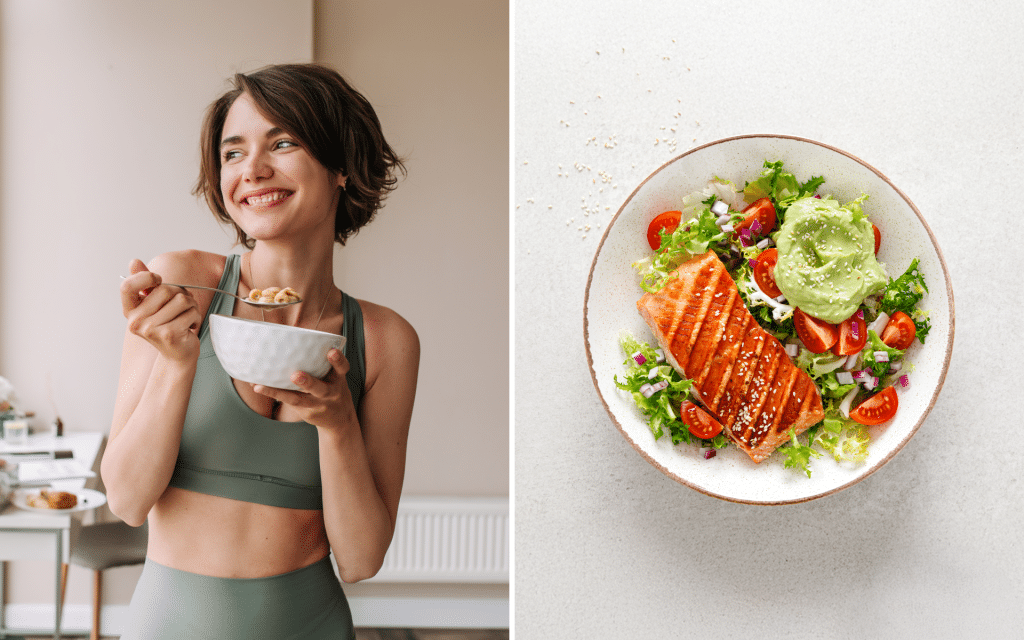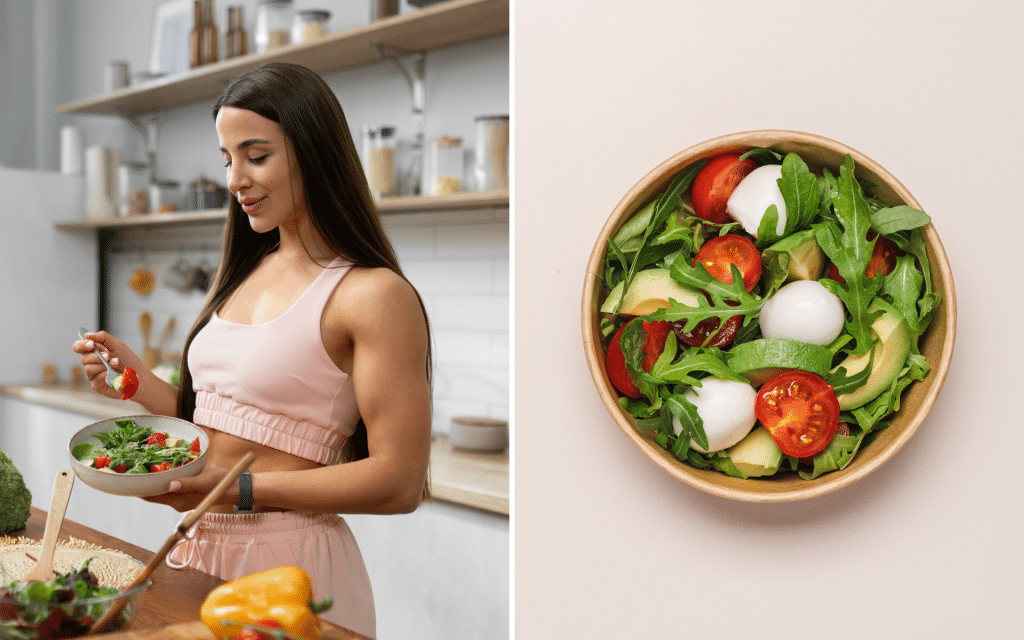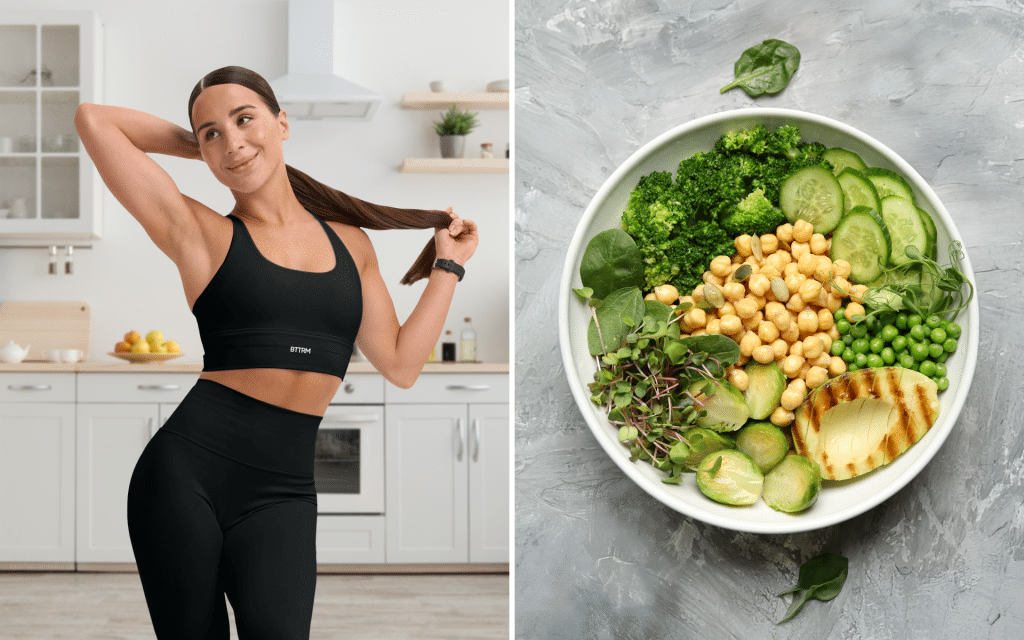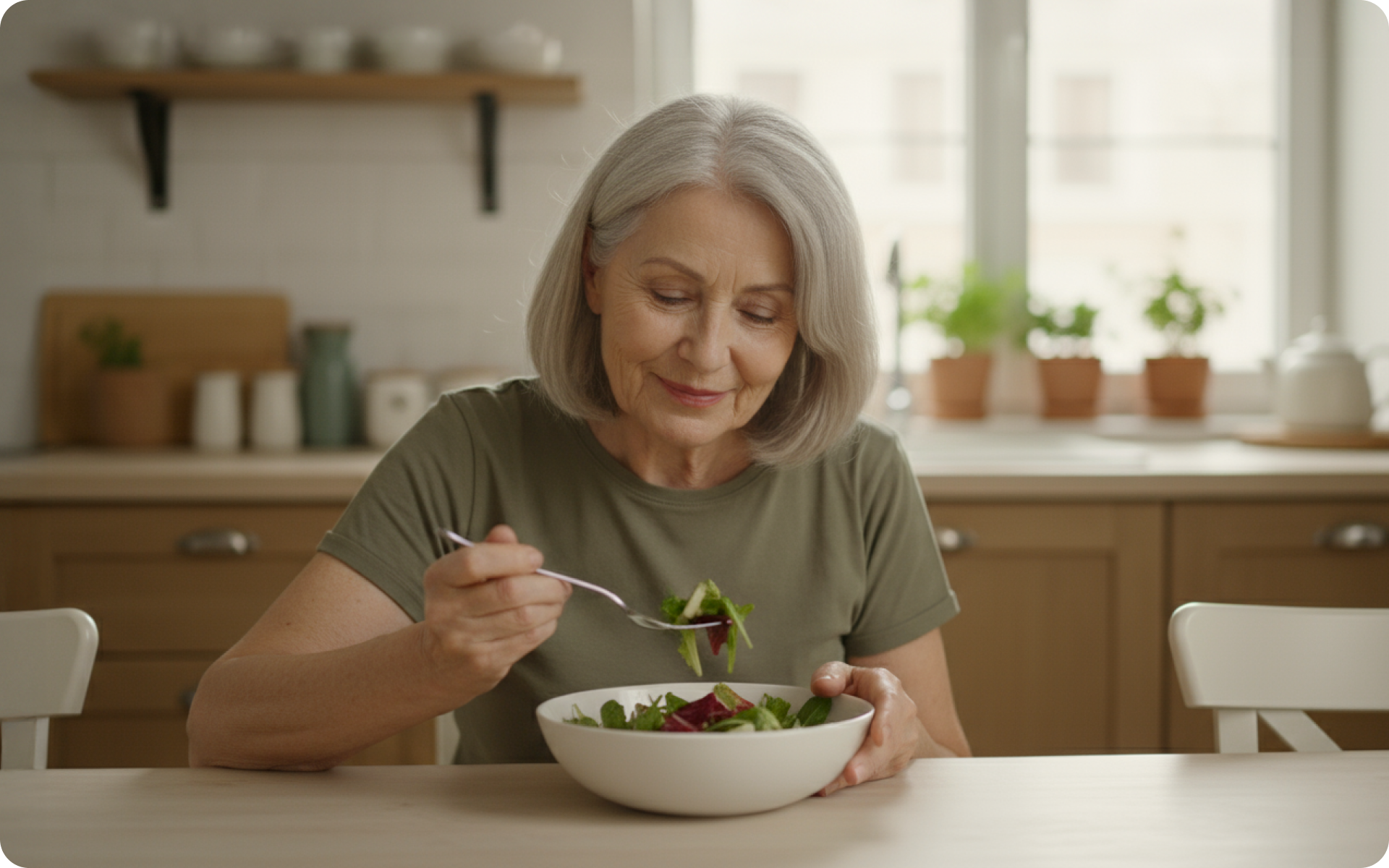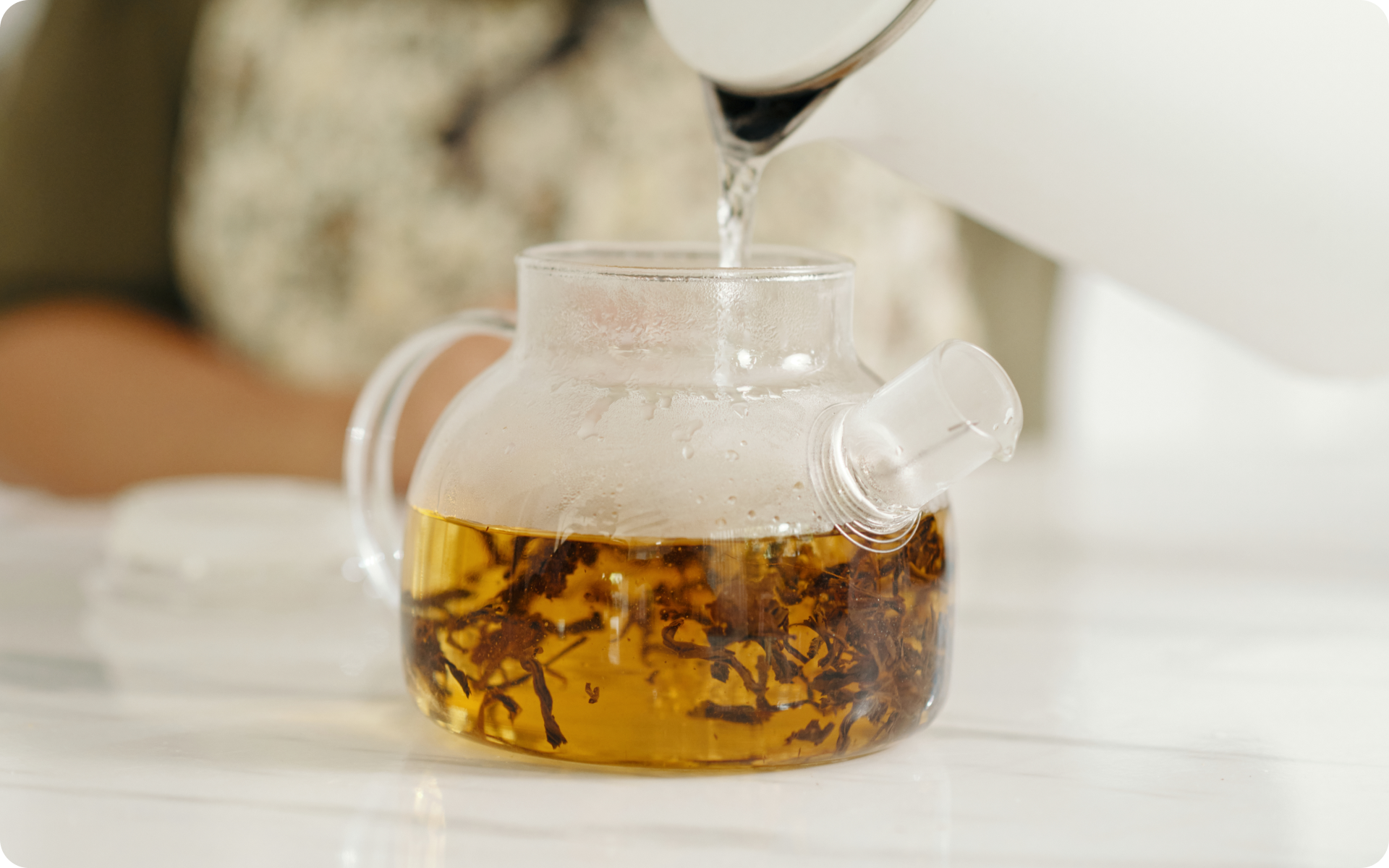“Processed” is a tricky word. Unless you are eating whole, raw foods, everything is processed.
For example, bread, cereal, cheese, tofu, and yogurt undergo some sort of processing, whether to increase shelf life or eliminate spoilage.
The problem with processed foods is the unhealthy additives, like:
- Dyes
- Preservatives
- Added sugars
- Saturated fats
These ingredients can make the food taste great while being somewhat addictive and easy to overeat.
Understanding the key differences between real food vs. processed food can help you make healthier choices.
In this guide, we will:
- Discuss the intricacies of transitioning from processed to real foods
- Examine the various categories of food processing
- Show you how to innovate your meal plans.
Let’s jump right in.
What Is The Difference Between Real Food Vs. Processed Food?
When wondering what is a difference between real food vs. processed food, your answer lies in these factors of the food you’re consuming:
- Nutritional value
- Health benefits
- Preparation
Real foods are whole, edible parts of animals, plants, and fungi that promote overall health. They retain their natural state and contain higher-quality nutrients.
Processed foods are preserved foods altered from their original form.
These foods undergo different processing methods, such as:
- Pasteurization
- Fermentation
- Dehydration
- Smoking
- Freezing
- Canning
- Pickling
- Etc.
Some processed foods are less nutritious, provide empty calories, and frequently contain additives and chemical stabilizers.
Excessive consumption of processed foods could lead to inflammation, weight gain, heart disease, or diabetes (1).
Here is a table with real food vs. processed food examples.
| Category | Real Food | Processed Food |
|---|---|---|
| Fruits | Apples, bananas, berries | Jam, fruit juice, purée |
| Vegetables | Spinach, broccoli, carrots | Vegetable chips, frozen veggie patties, canned vegetables |
| Grains | Steel-cut oats, brown rice, quinoa | Rolled oats, bread, cereal |
| Proteins | Eggs, milk, lentils, salmon | Sausages, hot dogs, bacon |
| Snacks | Nuts, seeds | Chips, cookies, candy |
What Qualifies As “Bad” Processed Food?
Why are processed foods bad?
The truth is not all processed foods are “bad.”
For example, rolled oats, tofu, and tempeh are processed foods with a high nutrient content. Fast food, baked goods, and hard candies are energy-dense and often low in nutrients.
According to NOVA classifications, there are varying degrees of processing.
These include (2):
- Group #1: Minimally processed or unprocessed (such as fruits, vegetables, whole grains, poultry, fish, etc).
- Group #2: Processed culinary ingredients (such as olive oil, coconut oil, butter, ghee, agave syrup, soy sauce, etc).
- Group #3: Processed foods (such as canned beans, pickled tomatoes, cream cheese, sardines, etc).
- Group #4: Ultra-processed (such as pre-made frozen meals, flavored dairy alternatives, packaged snacks, reconstituted meat products, etc).
The main category to avoid is ultra-processed foods, which are Group #4 on the NOVA scale.
BetterMe: Health Coaching app helps you achieve your body goals with ease and efficiency by helping to choose proper meal plans and effective workouts. Start using our app and you will see good results in a short time.
These unhealthy processed foods contain over 80% processed ingredients, including:
- Copious additives
- Flavor enhancers
- Stabilizers
- Dyes
Due to their extensive chemical modification, we don’t consider highly processed products “real food.”
They are formulations of food substances assembled into hyper-palatable food, which can trigger cravings and overeating (3).
In Group #4 foods, there is usually nothing left from its source (Group #1).
For example, you can replace potatoes as a base ingredient with dough suitable for packaged chips.
The dough creates a consistent texture and a longer shelf life but contains far fewer nutrients than you would get from eating the potato.
Studies show that overconsumption of ultra-processed products can negatively affect the following:
- Digestion
- Body weight
- Blood pressure
- Insulin resistance (4).
Read more: No Processed Food Diet Menu, Tips, and Everything Else You Need to Know.
Is Real Food Better Than Processed Food?
Many companies fortify highly processed foods with calcium, vitamin D, protein, and fiber. The deliberate addition of one or more micronutrients makes these foods more accessible to consumers vulnerable to deficiencies. However, these products also contain added sugar, fat, and salt.
Whole foods and minimally processed products retain most of their natural nutritional content, fiber, and other beneficial compounds. They provide healthier fats, phytochemicals, enzymes, and antioxidants than processed alternatives.
When considering real food vs. processed food, looking at your overall health is essential.
Here are the main reasons to incorporate more real, whole foods into your diet:
Lower Risk of Chronic Diseases:
Real food can:
- Balance gut bacteria
- Regulate metabolic markers
- Offer sustainable dietary practices.
This balancing effect can manage or prevent chronic illnesses, including:
Fiber Content:
Whole foods are a great source of dietary fiber.
Compared to artificial additives, they are less likely to cause digestive problems such as:
- Stomach discomfort
- Constipation
- Bloating
- Gas (7)
Improve Hydration:
Many whole foods have high water content, like:
- Cucumber
- Cantaloupe
- Honeydew melon
They can help you stay hydrated longer and restore optimal fluid balance after physical activity (8).
Maintain Healthy Weight:
Complex carbs can keep you full while consuming fewer calories. They have a higher nutritional value than simple carbs from ultra-processed meals.
Such unhealthy processed food examples may include:
- Premade pancakes
- Sugary cereals
- White bread
- Waffles (9)
Heart Health:
Foods like these can contribute to a heart-healthy diet:
- Leafy greens
- Whole grains
- Whole fruits
These foods contain heart-protective compounds, such as:
- Folate
- Nitrates
- Magnesium
- Polyphenols
They contain significantly fewer trans and saturated fats than highly processed alternatives.
Consuming foods with less trans and saturated fats can:
- Stabilize your cholesterol
- Promote healthy blood vessels
- Support optimal heart muscle function (10)
Athletic Performance:
Whole foods can curb inflammation and muscle soreness because most contain:
- Healthy fats
- Antioxidants
- Lean proteins
They can also boost the natural rejuvenation process.
Ultra-processed products often lack:
- Fiber
- Minerals
- Vitamins
They also offer no substantial benefit to training other than the calories needed to function and unhealthy amounts of sugar, salt, additives, and other chemicals.
Looking for a simple app to track your desired health outcomes?
The BetterMe app is the ultimate health coach.
You get personalized nutrition and exercise plans that perfectly fit your schedule. It does the math for you, so you don’t have to bother counting the calories.
What Are The Most Unhealthy Processed Foods?
Ultra processed foods (UPFs) can lead to more health concerns than other types of food. These industrial formulations contain countless ingredients you don’t use in your kitchen.
Additives and chemicals enhance the flavor and texture of the food. But the products have few quality nutrients.
Many studies indicated that UPF-predominant diets can cause a greater risk for:
- Mental health disorders
- Metabolic disease
- Heart problems
- Hypertension
- Weight gain
They taste delicious despite staying in your pantry for months or years (11, 12).
Some UPFs have addictive properties.
Daily bingeing on sugar produces a regular surge of dopamine levels in the brain.
These levels of dopamine make it difficult to control cravings and overeating behaviors.
You may also experience poor mental health outcomes, like depression, stress, or anxiety, from consuming UPFs as a regular part of your diet (13).
Here is a list of the top 7 foods to avoid.
-
Frozen Meals Or Desserts
When compared to their whole, natural alternatives, pre-made frozen meals tend to have:
- Tons of chemical preservatives
- Higher calories
- Trans fats
- Sodium
- Sugars
They are often derived from genetically modified, poor-quality crops.
Premade frozen meals may not provide the same quantity, quality, and variety of nutrients as whole foods.
Desserts like ice cream contain saturated fat and added sugar.
It can negatively affect your cholesterol and glucose levels. Consuming these foods in moderation and choosing meals with the fewest ingredients is best.
-
Packaged Chips
A family-sized bag of chips has about 1,200 calories. They have properties associated with food addiction and a very low satiety factor. You can feel hungry again right after eating them.
These deep-fried snacks contain harmful quantities of chemicals and preservatives.
The products lack sufficient quality in:
- Minerals
- Vitamins
- Protein
- Fiber
Overindulgence may pose a significant health risk for:
- Diabetes
- Hypertension
- Coronary heart disease (14).
-
Candy Bars
Candy has empty calories. It provides little nutritional value, while its calories come primarily from added sugars.
Excess sugar can lead to dental cavities, weight gain, and obesity. You are more likely to experience cravings and poor satiety (15).
If you fill up on candy every day, there is rarely any room for complex carbs.
You may feel stuffed for a while but are more likely to develop nutrient deficiencies in:
- Iron
- Calcium
- Vitamin B
These products stick to your teeth, erode tooth enamel, and often cause pain and discomfort.
You can still enjoy them in moderation if you balance this ultra-processed food with nutrient-dense meals.
-
Energy Drinks
Energy drinks often contain 74-86 mg of caffeine in 1 serving.
It increases adrenaline, which can cause:
- Hypertension
- Arterial spasms
- Heart palpitations
- Sleep problems hours after consumption
These drinks provide brain stimulation without providing quality nutrition for your body.
These products usually come in larger cans with plenty of sugar and additives. Even sugar-free drinks are highly acidic and can cause tooth erosion (16).
Occasional energy drinks shouldn’t cause serious problems with cardiac health, but excess consumption can lead to caffeine intoxication.
When consuming energy drinks too often you may experience:
- Gut pain
- Irritability
- Restlessness
- Muscle twitching
Reasons why BetterMe is a safe bet: a wide range of calorie-blasting workouts, finger-licking recipes, 24/7 support, challenges that’ll keep you on your best game, and that just scratches the surface! Start using our app and watch the magic happen.
-
Pastries
Ready-made pastries often contain ultra-processed ingredients. They can disrupt the different types of beneficial bacteria in your gut.
Packaged cakes, donuts, or croissants typically have:
- Hydrogenated oils
- Added sugars
- Refined flours
- Emulsifiers
Large quantities of pastries can cause:
- Blood sugar spikes
- Mood swings
- Poor satiety
- Bloating
- Gas
If you have diabetes or are trying to lose weight, pastries can sabotage your efforts.
Avoiding them or enjoying these foods as an occasional delicacy is best.
-
Processed Meats
Many companies load their overly processed meats with:
- Fat
- Salt
- Nitrate
- Cholesterol
These can all lead to heart problems and fluid build-up.
Sodium nitrite may increase the risk of colon cancer (17).
The flavor of these foods is often more concentrated and satisfying than their natural alternatives, making it difficult to adjust the portion size.
Cold cuts are versatile and require less prep than raw poultry or beef.
You can make sandwiches and add them to salads, omelets, wraps, and more.
-
Refined Grains
Refined grain products can lead to metabolic problems, chronic illness, and inflammation. They have fewer nutrients than whole grains and do not offer lasting energy.
These foods are often more fattening and pack more calories per serving.
Some refined grains are high-GI foods without enough vitamins, minerals, or nutrients to provide a substantial dietary benefit.
Studies showed refined grains are a primary contributor to the current diabetes and obesity epidemic. They are more likely to cause weight gain in the midsection than whole and natural grain foods (18).
Read more: Clean Eating Challenge: A Simple Guide To Kickstart Your Journey
What Are Some Real Food Alternatives To Processed Foods?
Slowly change your diet to prioritize low-processed foods. When you cook your meals at home, you can control the ingredients and easily create nutrient-dense meals.
Choose a base full of protein and complex carbs, then mix and match the ingredients you have on hand.
Here are some minimally processed foods examples to prioritize:
Breakfast Alternatives
- Sugar cereal with milk → Oatmeal with milk, honey, fruits, and nuts.
- Flavored yogurt → Plain Greek yogurt breakfast bowl with seeds, fruits, and granola made with oats.
- Refined grain pasta with canned tomato paste → Whole grain pasta with fresh tomato sauce.
Lunch or Dinner Alternatives
- Frozen pizza → Roasted veggies with lean meat or brown rice.
- Canned soup with additives → Homemade vegetable soup with beans or lentils.
- White bread sandwich with processed meats → Whole-grain bread with rotisserie chicken, tuna, or avocado.
- Frozen chicken nuggets → Homemade baked chicken tenders.
Snack Alternatives
- Chips → Air-popped popcorn with light seasoning.
- Candy → Dates, nuts, seeds, apples, grapes, etc.
- Packaged cookies → Homemade oatmeal cookies with applesauce and raisins.
How To Start Eating Real Food Instead Of Processed Food?
Challenging your eating habits can feel overwhelming if you’ve grown accustomed to convenient foods. Your body may crave a particular taste that is difficult to achieve with homemade meals.
The tips below can help you effectively transition from processed to real foods:
- Make slow and steady adjustments to your diet. These gradual changes make it feel more sustainable.
- Take time to cook and prepare food that provides energy, complex carbs, protein, vitamins, and minerals.
- Experiment with different side dishes, such as mashed potatoes, roasted vegetables, quinoa, brown rice, salad, etc.
- Choose packaged foods with a short ingredient list, preferably without preservatives, added sugar, or artificial flavors.
- You can replace soft drinks with tea, freshly squeezed juice, black coffee, cucumber, lemon, or mint-infused water.
- Don’t label all processed foods as “off limits.” This restriction can make you feel stressed and lead to overeating or bingeing. Moderation can help create balanced meals.
Processed meats like hot dogs, bacon sausages, and cold cuts are usually the biggest problem for many modern diets. You can enjoy them with just about anything — for breakfast, lunch, and dinner. They are convenient, have an enhanced flavor, and require no cooking experience. However, they may contribute to colorectal cancer, heart problems, and hypertension. Yes, and that is a good thing. Raw milk from cows could contain a range of pathogens. If one of the animals carries dangerous bacteria, it can spread to the milk and cause disease. Pasteurization destroys harmful bacteria and creates a much safer product. No. Fresh eggs from the shell are a whole, nutrient-dense food. But, different types of eggs and egg products may be processed. For example, fried eggs, baked goods, or instant egg-based meals undergo some form of processing. Their nutritional value depends on the ingredients used in their preparation. Frequently Asked Questions
What is the #1 unhealthiest food?
Is milk a processed food?
Is yogurt a processed food?
Plain yogurt is minimally processed. Any yogurt with dried fruits, sweeteners, or other ingredients is ultra-processed. If you want to add flavor without artificial ingredients, you can serve yogurt with fresh fruit, nuts, and seeds.
Are eggs processed food?
The Bottom Line
The key to nutrition is to eat a balanced diet, stick to whole foods as much as possible, limit processed products, and listen to your body.
Use ingredients that promote the health of your digestive tract and intestinal flora.
Enjoying processed varieties shouldn’t be a problem if you consume them in moderation and combine them with nutrient-dense meals.
But, in excess, ultra-processed food can harm your overall health. These processed foods go through several stages of processing.
Industrial methods help turn raw materials into highly delicious, shelf-stable food, often providing fewer nutritional benefits than whole and natural foods.
DISCLAIMER:
This article is intended for general informational purposes only and does not serve to address individual circumstances. It is not a substitute for professional advice or help and should not be relied on for making any kind of decision-making. Any action taken as a direct or indirect result of the information in this article is entirely at your own risk and is your sole responsibility.
BetterMe, its content staff, and its medical advisors accept no responsibility for inaccuracies, errors, misstatements, inconsistencies, or omissions and specifically disclaim any liability, loss or risk, personal, professional or otherwise, which may be incurred as a consequence, directly or indirectly, of the use and/or application of any content.
You should always seek the advice of your physician or other qualified health provider with any questions you may have regarding a medical condition or your specific situation. Never disregard professional medical advice or delay seeking it because of BetterMe content. If you suspect or think you may have a medical emergency, call your doctor.
SOURCES:
- Low-Grade Inflammation and Ultra-Processed Foods Consumption: A Review (2023, nih.gov)
- Ultra-processed foods, diet quality, and health using the NOVA classification system (2019, fao.org)
- Hyper‐Palatable Foods: Development of a Quantitative Definition and Application to the US Food System Database (2019, researchgate.net)
- Ultra-Processed Foods and Human Health: A Systematic Review and Meta-Analysis of Prospective Cohort Studies (2023, nih.gov)
- Rediscovering the nutrition of whole foods: the emerging role of gut microbiota (2022, sciencedirect.com)
- Impact of a Whole-Foods, Plant-Based Nutrition Intervention on Patients Living with Chronic Disease in an Underserved Community (2021, nih.gov)
- The Health Benefits of Dietary Fibre (2020, nih.gov)
- Fluid and water balance: a scoping review for the Nordic Nutrition Recommendations 2023 (2023, nih.gov)
- Physiology, Carbohydrates (2023, nih.gov)
- A Heart-Healthy Diet for Cardiovascular Disease Prevention: Where Are We Now? (2023, nih.gov)
- Ultra-processed food exposure and adverse health outcomes: umbrella review of epidemiological meta-analyses (2024, nih.gov)
- Ultra-Processed Foods: A Narrative Review of the Impact on the Human Gut Microbiome and Variations in Classification Methods (2024, nih.gov)
- Ultra-Processed Food Addiction: A Research Update (2024, nih.gov)
- The Effect of Fatty Acids Profile in Potato and Corn Chips on Consumer Preferences (2024, nih.gov)
- Sorry Parents, Children Consume High Amounts of Candy before and after a Meal: Within-Person Comparisons of Children’s Candy Intake and Associations with Temperament and Appetite (2022, nih.gov)
- Influence of energy drinks on enamel erosion: In vitro study using different assessment techniques (2021, nih.gov)
- A Review of the In Vivo Evidence Investigating the Role of Nitrite Exposure from Processed Meat Consumption in the Development of Colorectal Cancer (2019, nih.gov)
- Associations of Whole Grain and Refined Grain Consumption With Metabolic Syndrome. A Meta-Analysis of Observational Studies (2021, nih.gov)
